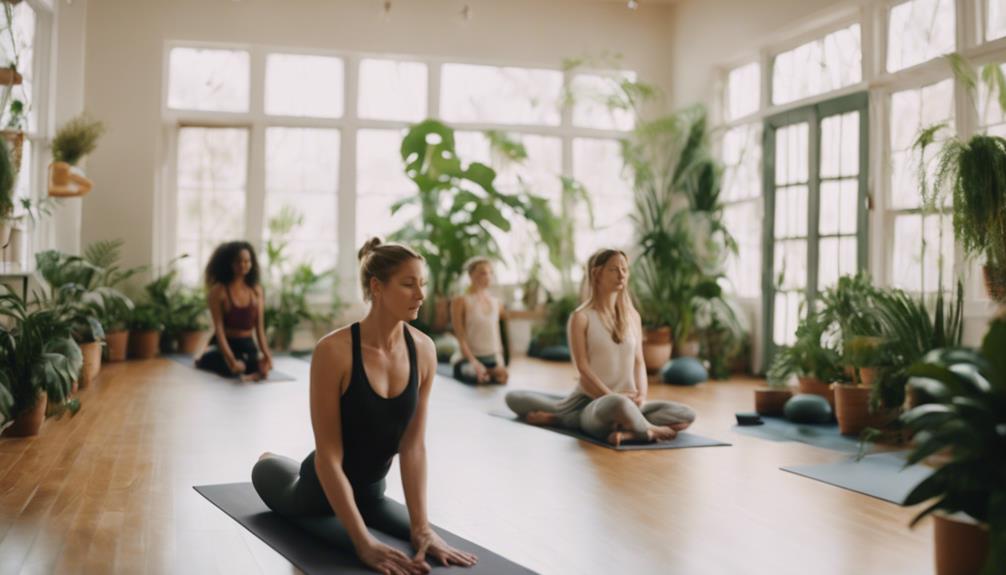How To Store Yoga Mats

Storing your yoga mat properly is essential for maintaining its longevity and keeping your practice space organized. In this guide, we will explore various methods and tips on how to store yoga mats effectively, ensuring that your mat remains in excellent condition while also being easily accessible for your yoga sessions.
Understanding the Importance of Proper Yoga Mat Storage
Yoga mats are an investment in your health and well-being. Proper storage is crucial for maintaining their quality and functionality. When mats are not stored correctly, they can become damaged, lose their grip, or even develop odors due to moisture and bacteria buildup. Understanding how to store yoga mats is essential for prolonging their lifespan and ensuring a clean and safe surface for your practice. By following effective storage methods, you can avoid the common pitfalls that lead to wear and tear.
Choosing the Right Storage Location for Your Yoga Mat
The first step in how to store yoga mats is selecting an appropriate location. Ideally, you want to choose a cool, dry place away from direct sunlight, as UV rays can degrade the material over time. If possible, avoid damp areas like basements or bathrooms, as moisture can lead to mold and mildew. A dedicated yoga space or a closet that is well-ventilated and temperature-controlled is ideal. This not only helps maintain the integrity of the mat but also keeps your practice area tidy and inviting.
Rolling vs. Folding: The Best Methods for Storing Yoga Mats
When it comes to the actual storage technique, there are two primary methods: rolling and folding. Most yoga practitioners prefer rolling their mats, as it helps maintain the shape and prevents creasing. To roll your mat correctly, start from one end and roll it tightly, ensuring there are no air pockets. For those with thicker mats, consider using a yoga mat strap to keep the rolled mat secure.
Related Posts:
Folding is another option, typically recommended for thicker mats or those made of natural materials. If you choose to fold, make sure to do it gently to avoid permanent creases. Store the folded mat in a bag or a designated mat holder to keep it protected from dust and scratches. Knowing whether to roll or fold your mat is a key aspect of how to store yoga mats properly.
Utilizing Yoga Mat Bags and Straps for Easy Storage
Investing in a quality yoga mat bag or strap can significantly enhance your storage solution. A mat bag not only provides protection from dust and dirt but also offers convenient portability. Many bags come with additional compartments for carrying yoga props, water bottles, and personal items, making them a practical choice for on-the-go yogis.
Yoga mat straps, on the other hand, are perfect for those who prefer to roll their mats. These straps keep the mat tightly rolled and can also be used to carry it hands-free. Regardless of the method you choose, using specialized storage accessories can make a big difference in how to store yoga mats effectively.
Maintaining Your Yoga Mat During Storage
Another critical aspect of how to store yoga mats is ensuring that they are clean and dry before putting them away. After each use, take a moment to wipe down your mat with a gentle cleaner or a DIY solution made from water and vinegar. Allow it to air dry completely before rolling or folding it for storage. This simple routine helps prevent the buildup of odors and bacteria, ensuring that your mat remains fresh and ready for your next session.
Additionally, avoid storing your mat in a damp environment, as moisture can lead to mold growth. If you notice any signs of mildew, clean the mat thoroughly before storing it again. Regular maintenance during storage will keep your mat in top condition for years to come.
Creative Solutions for Storing Yoga Mats at Home
If space is limited in your home, you might need to get creative with your storage solutions. Consider utilizing vertical space by hanging your yoga mat on a wall-mounted rack or hooks. This not only keeps your mat out of the way but also adds a decorative touch to your practice area.
Another idea is to use a storage bin or basket specifically for yoga accessories. Designate a corner of your living room or bedroom for your yoga gear, making it easy to access your mat and props whenever you feel the urge to practice. These creative solutions can help you master how to store yoga mats in a way that complements your living space.
The Benefits of Proper Yoga Mat Storage
Understanding how to store yoga mats properly comes with numerous benefits. Firstly, it prolongs the life of your mat, saving you money in the long run. Secondly, a well-stored mat ensures that it is always clean and ready for use, enhancing your overall yoga experience.
Moreover, maintaining a tidy and organized practice space can positively impact your mindset, making it easier to get into the right frame of mind for yoga. When your mat is easily accessible and in good condition, you’re more likely to engage in regular practice, which is key to reaping the full benefits of yoga.
Conclusion: Mastering the Art of Yoga Mat Storage
In conclusion, knowing how to store yoga mats is essential for any yoga practitioner who wants to protect their investment and create an inviting practice space. By choosing the right storage location, utilizing appropriate methods, and maintaining your mat’s cleanliness, you can ensure that your yoga practice remains enjoyable and effective.
Whether you opt for rolling or folding, invest in storage accessories, or get creative with your space, the key is to find a solution that works best for you. By following these guidelines, you can keep your yoga mat in excellent condition and enjoy many fulfilling sessions ahead. Happy practicing!Can You Wear Yoga Pants To WorkYin YogaSomatic Yoga